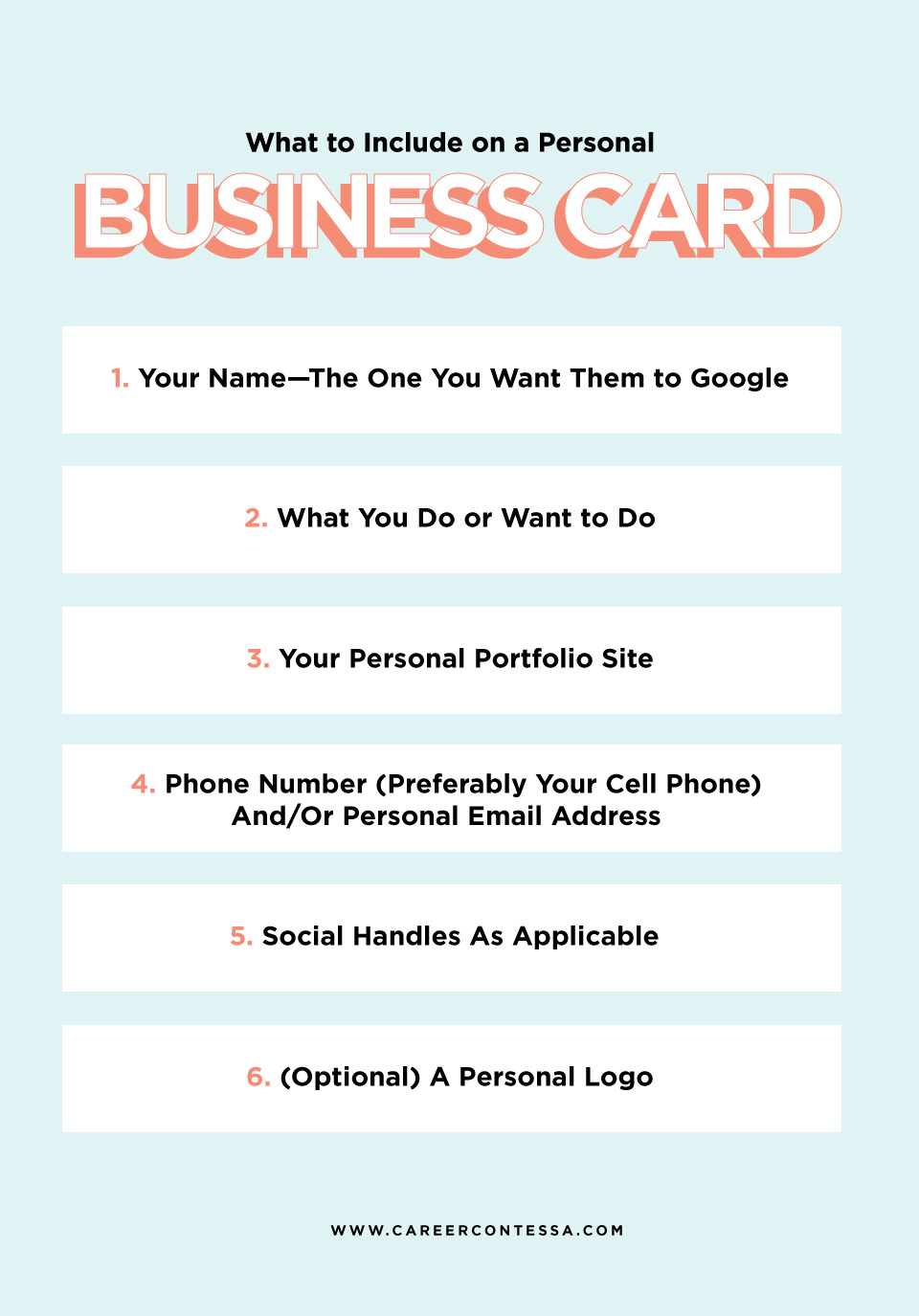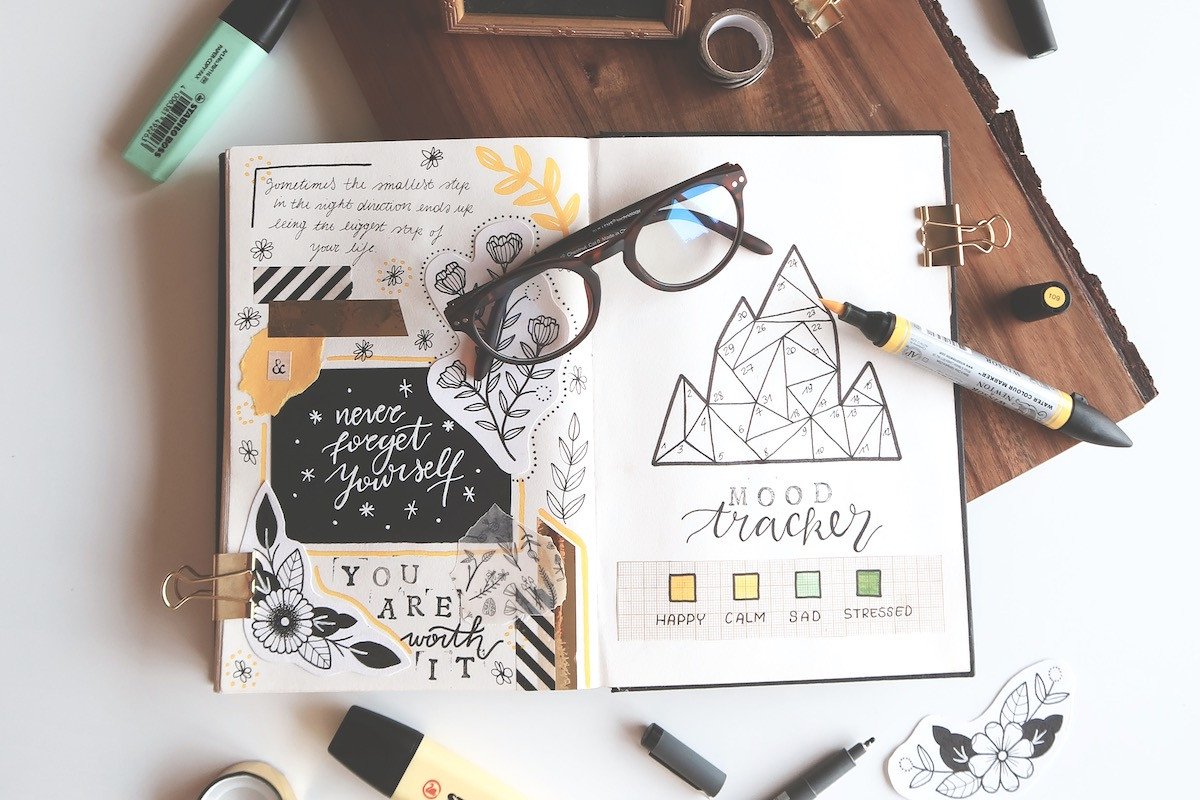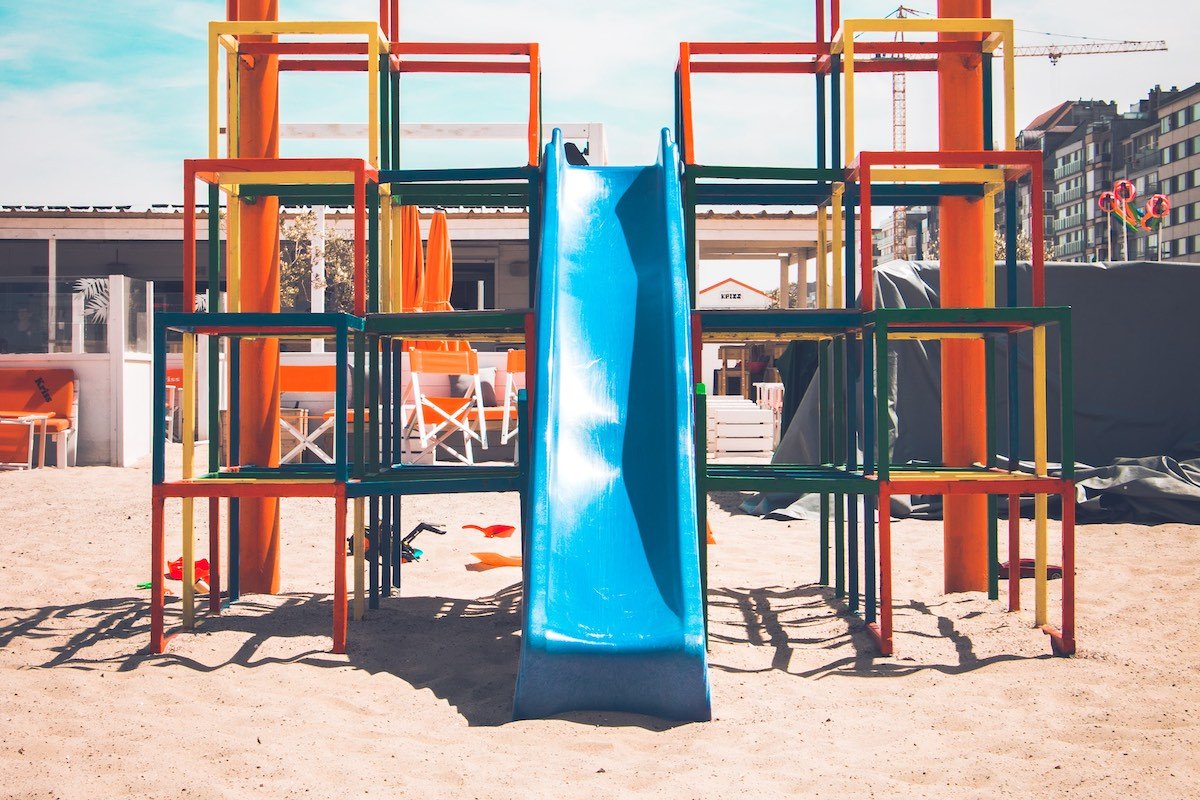You've probably had a company business card at one job or another, but do you carry a personal one?
Because the thing is, if you're currently job searching, hoping to start a side hustle or land some freelance, or you'd just like to keep your options open, your regular company card isn't going to cut it. That tiny, unassuming personal business card just might be what stands between you and your next big career opportunity.
Skim the Article:
Why You Need a Personal Business Card
Smart women make their own luck (and business cards). When I decided I wanted to leave my last job, I knew it was time to start putting myself out there (and networking any chance I got). I had business cards through my company. They were like most company cards: white, square, and bland. I didn't want to be seen with them.
One night, after a motivating happy hour dialogue, I came home feeling like I needed to do something. I wanted proof that I was ready to start a new chapter. A requisite Google search for "personal business card design" led me to
MOO, an online service that lets you create and print cards online (courtesy of plenty of well-designed templates). I'm sure there are other companies out there that will do the same, but so far MOO is the best one I've found.
I spent the next hour designing my ideal layout. It was a card on my own terms, according to my own rules based on
my career transition goals. A week later, the package arrived, and my career hasn't looked the same since. Here's how a personal business card changes the game:
1. It Helps You Control Your Own Story
In a few simple words, I summarized who I was professionally, but also who I wanted to become. Each card gave all the information people needed to find me online, including a link to my portfolio but also my Instagram, which I knew demonstrated my aesthetic and voice.
2. It Makes It Easy for People to Remember—And Hire—You
In simple terms, those cards made it easier for people to hire me. They didn't have to "just remember" my last name the next day or go digging through search results to find my portfolio. And so they did hire me. Just like that, I hit a new level of legitimacy—and I started getting calls.
3. It Gives You Confidence (Seriously)
Personal business cards serve a specific need: they help you summarize who you are to a potential contact. But they also make your professional life feel real, even if you're currently faking it until you make it. And that's the heart of it: even though I felt like my career had hit a dead end, ordering those cards made me feel like I'd done something about it, and that I was gonna be OK.
What to Include on a Personal Business Card
1. Your Name—The One You Want Them to Google
Your full name or, more specifically, the one you use professionally. "Kit" isn't my given name (I'll leave you the fun of guessing what it is), but it is the name I've published writing under since I was 15. And it's the name I want people to search for on Google when they're looking into my experience because that's where all the good stuff is.
2. What You Do or Want to Do
Maybe you're slaving away as an administrative assistant but your ultimate goal is to become a graphic designer. Your personal business card should not read "administrative assistant." That isn't who you are! That's just what you're doing right now. Think about what you'd like to call yourself. "Designer"? "UX Design + Web Design"? If you're not sure, look up people you admire on LinkedIn and do some research on the ways they describe their work and themselves.
3. Your Personal Portfolio Site
4. Phone Number (Preferably Your Cell Phone) And/Or Personal Email Address
You want people to be able to reach you quickly and easily, so a personal business card should include at least two options for contacting you. And make sure that whatever email address you include, you're checking it regularly and often. If you're thinking about freelancing, you need to get used to quick replies. I always answer within 24 hours. You can choose to skip the phone number, but honestly, whenever I've seen people doing that, they wind up having to jot their phone numbers down in pen on the card anyway. My recommendation is to skip the hassle and include it.
5. Social Handles As Applicable
Unless your industry skews toward keeping these things private, you're may want to include your LinkedIn, Twitter, and/or Instagram depending on what you'd like to show off. If you're a wordsmith, Twitter makes sense. If you're trying to show that you have a particular style and eye for design, you might include Instagram. It varies because personal business cards are just that—personal. Think about your end goal and decide what makes the most sense.
6. (Optional) A Personal Logo
If your personal brand is on lock, you might have a logo on your personal website, that you can include on your business card as well. If so, great. A consistent brand is great. If not, don't sweat it. Simple is always best anyway.
What Not to Include on a Personal Business Card
Just a few pointers here because sometimes people overdo it:
- Too much design—the goal is for them to focus on your information, not on the graphics
- Your mailing address—danger zone. Do you really want that floating around in the world? It also takes up too much space so it's a lose-lose.
- Typos—On multiple occasions, I've encountered a personal business card that has a typo, even in the email address. That's a big problem if you want people to contact you. So double- and triple-check before hitting "Purchase'
- A QR code—No one uses these anymore, but somehow they still crop up. Just don't. People are savvy enough to type in your personal website URL on their own.
The Simplest Personal Business Card Template
If you're not sure where to start, this layout is a no-fail option. Simple, right?
Kit Warchol
Writing + Editing | Digital + Brand Strategy
kitwarchol.com | IG: @kitwarchol
[Phone Number]
25 Ways to Use Your Personal Business Card
Just to drive the point home, here are some other times carrying cards can actually work out for you:
- At any networking event ever.
- When you’ve got a side hustle going and you’re your own marketing department.
- Or you've got several side hustles going, and you don't have cards for each of them.
- You’re at a Girls Night Out and you meet a woman you’d like to know better.
- Time to mail a package from your Etsy store? Drop it in the box with your “Thank You” note.
- You hate your current job, and you’re trying to find a new one.
- Or maybe your current job title doesn’t match what you want to do. Like, at all.
- You want people to visit your personal site because it looks so good.
- You’re at an interview, meet yet another person, and—realize you’ve run out of copies of your resume.
- You’re like ‘This dude’s cute,’ but you’re afraid he might not be interested, or you’re just afraid to ask him to coffee. Keep it pseudo-profesh.
- You know no one spells your last name correctly ever. Just hand it to them.
- At a dinner party when you’re trying to explain to the person next to you WTF you actually do.
- You’re hesitating on when to launch your entrepreneurial venture. You’ll never be completely “ready.” Business cards make it official.
- Are you a designer or branding professional? Your business card is a tangible example of your aesthetic and skills.
- If your company name or website address is hard to remember.
- To drop into the fishbowl at your neighborhood Thai restaurant for a free lunch entry.
- There’s something in your teeth, but you don’t have floss. Card corners work wonders.
- When you’re somewhere loud and the person you meet can’t hear what your name is.
- When someone else gives you theirs. It’s weird to not respond in kind.
- When you’re traveling. Slip it into your baggage tag.
- When you don’t want to give someone your number. A card with just an email address is a stealth cop out.
- When your coworker isn’t at her desk and you want her to know you’ve stopped by. Calling card.
- When you’re looking at a chair at a yard sale, and they won’t go as low as you want. Ask them to email you if they change their mind.
- At Sephora, when the clerk asks for the email address on your account.
- When you just need something to write on.













